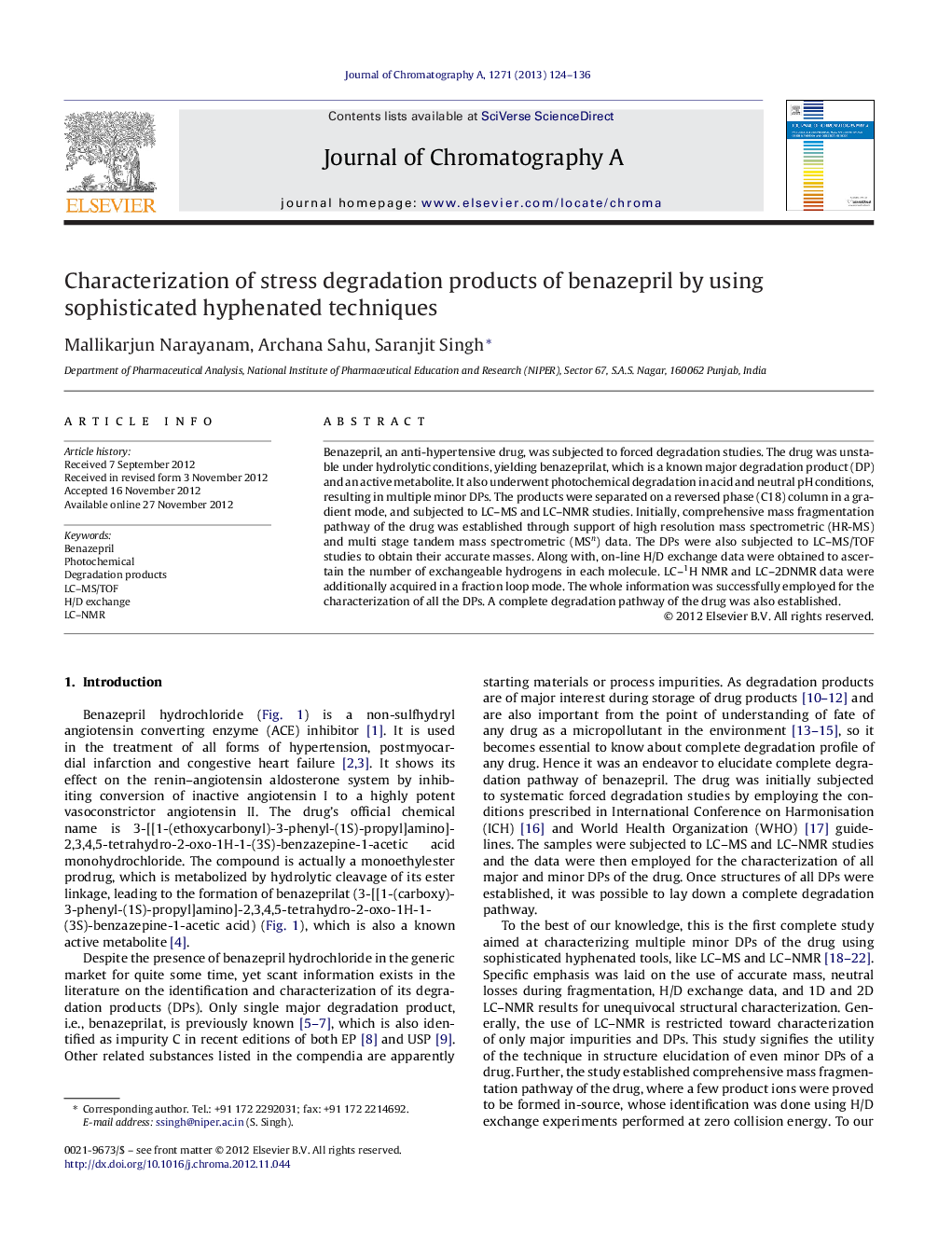| Article ID | Journal | Published Year | Pages | File Type |
|---|---|---|---|---|
| 1201505 | Journal of Chromatography A | 2013 | 13 Pages |
Benazepril, an anti-hypertensive drug, was subjected to forced degradation studies. The drug was unstable under hydrolytic conditions, yielding benazeprilat, which is a known major degradation product (DP) and an active metabolite. It also underwent photochemical degradation in acid and neutral pH conditions, resulting in multiple minor DPs. The products were separated on a reversed phase (C18) column in a gradient mode, and subjected to LC–MS and LC–NMR studies. Initially, comprehensive mass fragmentation pathway of the drug was established through support of high resolution mass spectrometric (HR-MS) and multi stage tandem mass spectrometric (MSn) data. The DPs were also subjected to LC–MS/TOF studies to obtain their accurate masses. Along with, on-line H/D exchange data were obtained to ascertain the number of exchangeable hydrogens in each molecule. LC–1H NMR and LC–2DNMR data were additionally acquired in a fraction loop mode. The whole information was successfully employed for the characterization of all the DPs. A complete degradation pathway of the drug was also established.
► Hyphenated tools like LC–MS/TOF and LC–NMR were used for characterization of minor photodegradation products of benazepril. ► Comprehensive mass fragmentation pathway of drug was established. ► Presence of in-source fragmentation was justified through hydrogen–deuterium exchange experiments. ► In total, ten degradation products were identified and degradation pathway of the drug was established.
